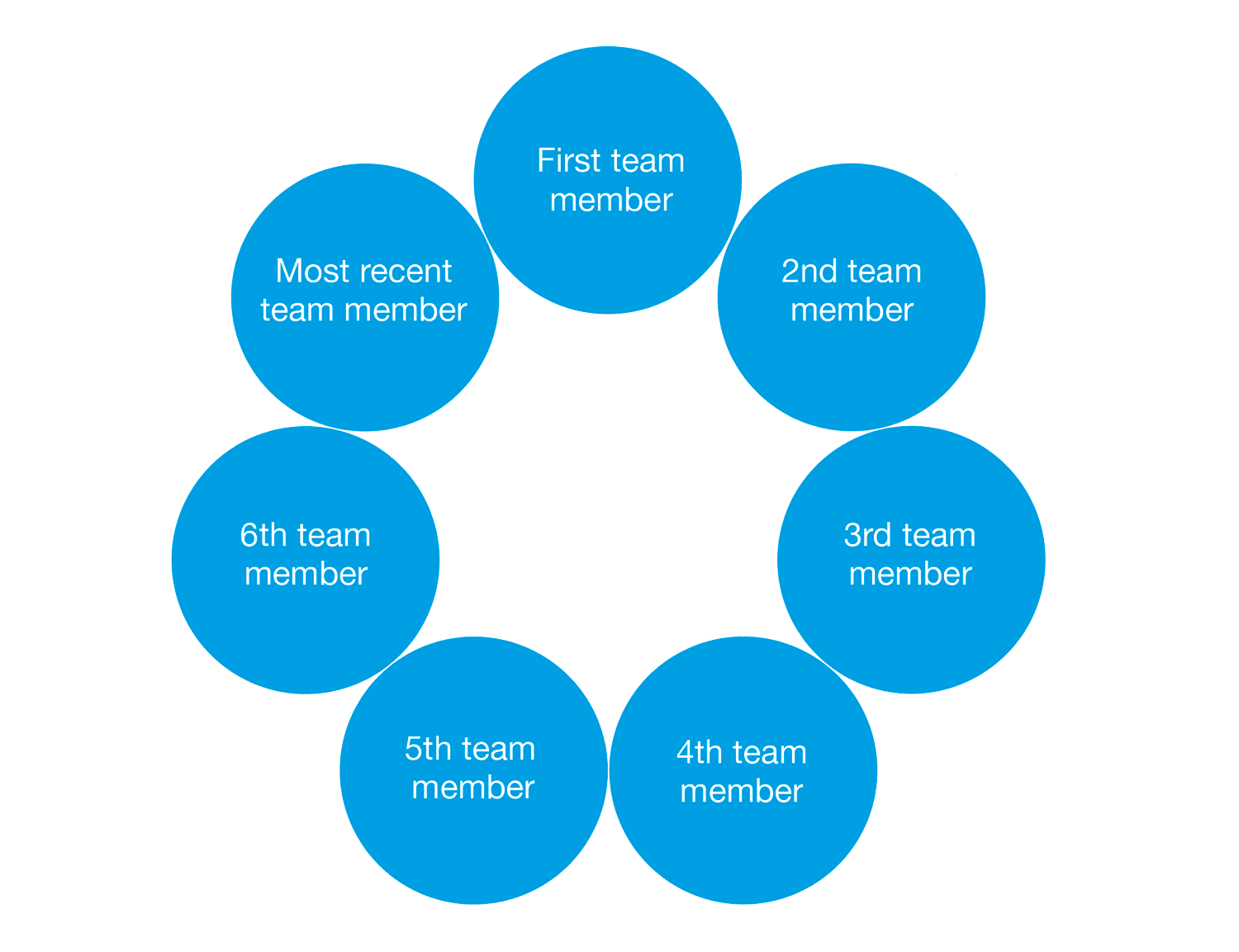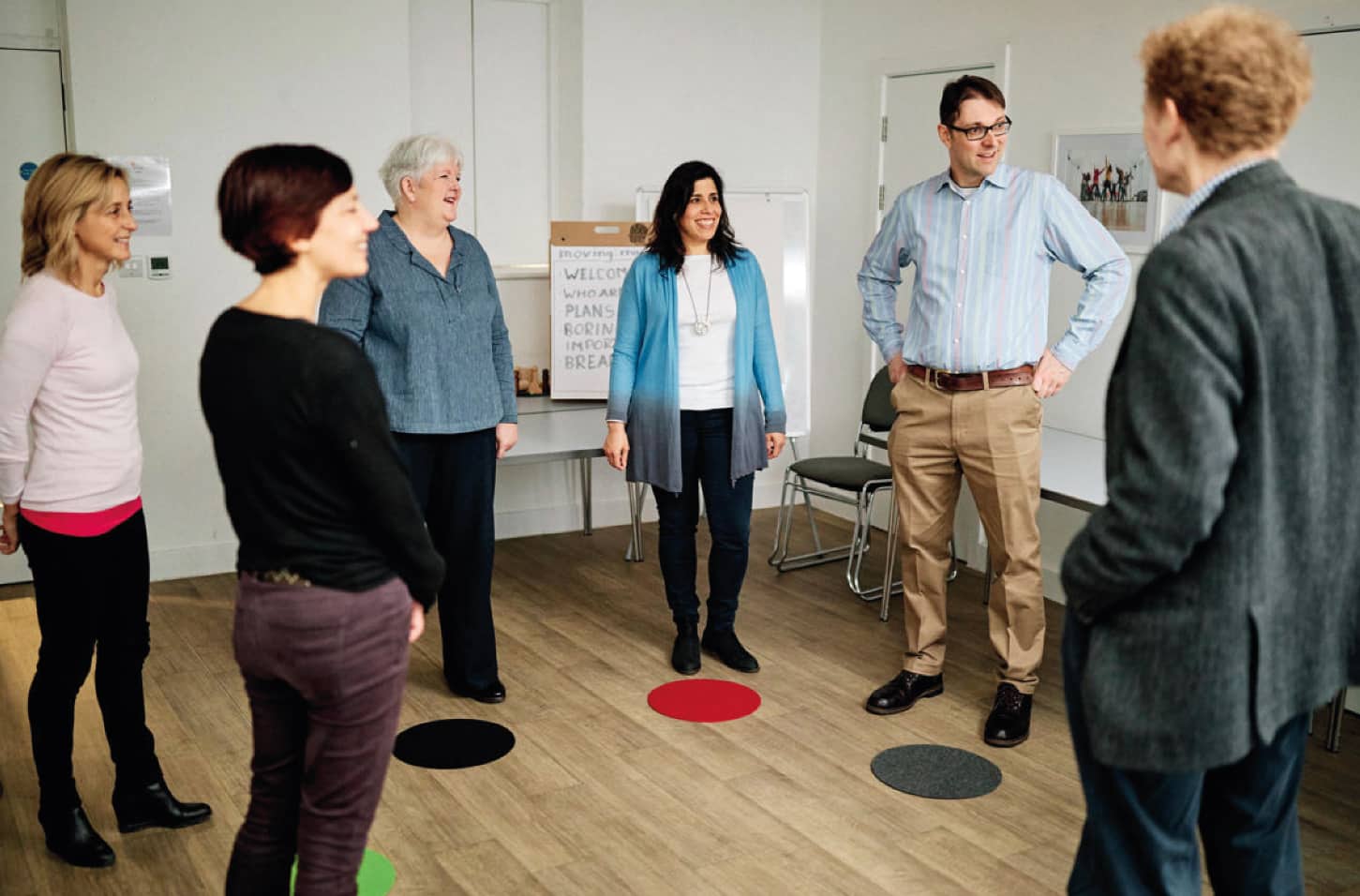Team tenure
26th February 2021 | Claudia Filsinger
Why understanding team tenure can be a key to healthy sales-team dynamics and a rapid alignment of teams.
The longer a team has spent together with the same composition of team members, the more harmonious interpersonal relationships become. The shared experience builds trust and psychological safety, leading to smoother team processes, more effective use of resources and increased team performance (Gonzales-Mule et al., 2020). However, the reality for many sales teams is a frequent change in team dynamics due to multiple factors: reorganisation of sales territories, integration of employees after acquisitions, and natural attrition as individual members move to new roles outside the team.
Frequently, team interventions are used to compensate for recurring team membership changes, or to accelerate bonding in new teams. Usually these focus on team composition aspects such as individual personalities and strengths, team roles (eg tools such as Belbin) and skills. Further, the focus is on clarifying the team purpose and visualising future goals. Indeed, I am using many of these approaches in my own team coaching practice and they have their rightful place to speed up team processes, give teams access to their full human capital and create clarity of their future direction. However, teams are complex constructs due to the multitude of interrelationships (for example, a team with ten members results in 45 different relationships); therefore individual-based methods need to be combined with approaches working at the team level.
One often-overlooked perspective that holds a key to balancing relationship dynamics and simplifying team complexity is the team’s membership history: the order in which members have joined the team.
Team tenure: a new team perspective
Each team member will have an individual length of service in the team, the so-called team tenure. Knowing the individual team tenure and the order in which team members joined has multiple benefits. Firstly, it makes the individual experience and varied length of service visible which form the team’s resource base and human capital. But it goes further by giving new perspectives that allow the team leader to work at a deeper level on the interrelationships between team members.
Relationship conflicts between team members can be caused by not enough respect for the legacy of others’ work by later joiners. Vice versa, longer-serving team members can be prone to “groupthink” and a need for harmony can lead to not enough openness for new ideas and change suggested by newcomers.
Seeing the team membership history at a glance can also help sales leaders to balance the time they are spending with individuals. It is easy for leaders to be drawn into spending lots of time with newcomers and to overlook the needs of established team members for support.
So how can the team-tenure perspective be used to benefit leaders and teams practically?
The clock metaphor as a coaching tool
To document the order of team members’ joining, the team is represented in a circle using the metaphor of a clock face. The longest-serving team member’s name is put at 12 o’clock, the second-longest team member at 1 o’clock and so on going around the circle clockwise. Documentation can be done simply with Post-it notes in a circle on a desk or flip chart, a PowerPoint template or with floor markers (Figures 1 and 2). Different colours can represent previous team membership: for example, after merging territories or acquisitions (Figure 3).




It is an easy pitfall for team leaders not to pay enough attention to how their team has formed. Yet for the employees, their origin is an important part of their professional identity even if an acquisition or territory merger took place many years ago.
Importantly, the clock face tool can be used by sales leaders for self-coaching or when coaching and mentoring colleagues, the approach is also useful for working with the team itself.
What is our (hi)story? A co-created team narrative
Mapping out the team members’ joining history in a circle raises the team’s self-awareness, facilitates team dialogue and synchronises team relationships. When I am introducing this exercise in team workshops, teams are always surprised how wrong they are at guessing in which order they joined. Frequently, established team members still feel like newcomers and undervalue the contributions they could bring to the team. Newer team members and leaders often realise that they make wrong assumptions and miss vital information about the team’s origins to fully understand the team’s culture, business practices and motivations.
Practically, the team story mapping can be done using the 1:1 clock-metaphor approach described previously, by creating a circle on a PowerPoint with names in order of joining that can be shared with virtual teams. When working together in a meeting room, team members put their chairs in a circle or stand in a circle on floor markers in their order of joining while sharing the team story (Figure 4).
The team story is a co-created narrative of the team’s history that is told in turns: starting with the longest-serving team member with team members then taking turns in order of their joining date, each sharing their team experience. They describe the atmosphere in the team when they arrived, the challenges and successes. This process allows the older team members to pass on team knowledge, share past experiences, and makes visible how team values have formed. Team members who have left are remembered through the story telling and their contribution is honoured.
The team-story activity can increase team cohesion considerably in very little time. Team leaders find it leaves their teams more settled with healthier relationship dynamics.
The team story exercise accelerates the settling-in of newer team members by giving them a better grasp of the DNA and the resources of the team they are joining. It also helps the team to process past negative experiences, such as challenging change, disruptive innovation or regrets over team members and leaders leaving.
Past toxic team relationships can lead to dynamics that still play out in the present, for example showing up in unfounded trust issues. These can also be caused by loyalties to past leaders or teams. Past negative events can also leave their shadows: for example, financial issues from the past that have led to disproportionate risk adversity or overregulation. Conversely, over focus on past successes can lead to complacency, lack of innovation and transformation. By viewing the past history from the present viewpoint, the interpretation of these events can be updated to be more in line with the team’s present reality and future goals.
After the team-story activity, teams report that they feel more connected to each other, see their team’s potential and its challenges more clearly, and have a better sense of the fabric of the team as a whole. As most sales teams are not co-located, and will have had much less informal interaction during the pandemic, the team-story activity can increase team cohesion considerably in very little time. Team leaders find it leaves their teams more settled with healthier relationship dynamics.
Other applications for the “tenure” principle
Customer team story. The approach can be used as a lens to analyse customer decision-making information. Who are the longest-serving role holders at the customer? What loyalties do they hold? What is the history of the group of people tasked with making a buying decision?
Previous role holder dynamics: A variation of the tenure principle can be applied not just to teams, but also by any role-holder to explore the history of their role. Practically, this can be done by mapping out Post-it notes with the names of previous role holders. Alternatively, floor markers with the names of previous role holders allow for literally “standing in the shoes of the predecessors” and an intuitive tuning into past dynamics that play out in the present by exploring questions such as:
- Who came before me?
- What legacy have they left?
- How can I build on their work with my strengths?
- What dynamics from past role holders are playing out that are no longer useful, such as loyalties that are in conflict with my goals for my role?
Launch dates in product/service portfolios. Sales managers frequently complain that their team members cling to their comfort zone of selling established products in saturated markets and don’t reap new opportunities such as cloud solutions. Mapping out the order of the products and services offer in time order of their launch can help an honest analysis and identify emotional attachments to products, services and customers that should now be given less attention and fewer resources.
Customer and partner portfolio. Every time new customers or partners join a portfolio the dynamics change. Sales professionals need to balance their time and resources. Mapping out the “tenure” of customers or partners in a sales professional’s portfolio can help with balancing resources and attention.
Summary
Looking at the tenure history of teams, job roles and portfolios holds holistic insights for current decision making through a better understanding of how past events impact on the present. The team-story activity creates healthier team relationship dynamics through the rapid alignment of teams. This is increasingly critical as sales teams are commonly dispersed in different locations and more recently due to homeworking with little informal interactions.
References and further reading
Erik Gonzalez-Mule, Bethany S. Cockburn, Brian W McCormick, Peng Zhao, ‘Team tenure and team performance: A meta-analysis and process model’, Personnel Psychology, 2020; 73:151-198.
John Whittington, Systemic Coaching and Constellations: The Principles, Practices and Application for Individuals, teams and groups, third edition, Kogan Page, 2020.


